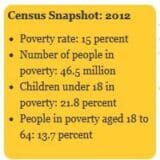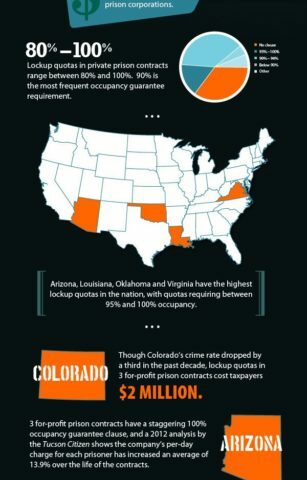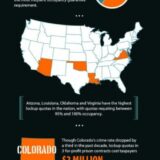

When Kentucky’s legislature adopted a bill intended to transform the Bluegrass State’s troubled pension system last spring, state officials were ecstatic. Signing the bill into law on April 4, Democratic governor Steve Beshear hailed it as groundbreaking legislation that would “solve the most pressing financial problem facing our state – our monstrous unfunded pension liability and the financial instability of our pension fund.”
Not everyone was convinced.
Critics, who include pension-fund experts, lawmakers and AARP Kentucky, claim the new law will hurt workers, taxpayers and retirees. What’s more, they say the law was largely crafted behind the scenes by an unusual alliance between two out-of-state organizations: the Pew Center on the States and the Laura and John Arnold Foundation. Some detractors go further and assert that the Arnold Foundation is using Pew’s sterling reputation for academic integrity as a fig leaf to hide its own free-market agenda.
» Read more about: Promise Breakers: How Pew Trusts Is Helping to Gut Public Employee Pensions »


for at least an hour. Maybe longer. It was longer.
No one spoke, looked away, or drew attention
with their hands. A few of us opened our mouths,
a few always do. We didn’t know we’d done it.
No one saw. Like losing a button. We were busy
not speaking. We had drinks, a few snacks, watched
TV with the sound off. A few of us thought about
the button, the one that says MUTE, how common
it is now. We tried to imagine it on other things,
things that don’t speak but are loud: lamps, guns,
a fire truck with MUTE painted on it. It would’ve
looked good on us, stenciled white across our chests.
We wore dark colors, earth tones. No one calls them
dirt tones or soil.


It’s been 100 years since ideological conservatives joined with doctors and insurance companies to kill the first movement in the United States for what was then called “compulsory health care.” Now, on the eve of their epic loss, those who deeply hate the idea that we have a collective responsibility to care for each other are desperately trying to stop history’s clock.
Beneath the tested rhetoric from opponents like the Heritage Foundation and Texas Senator Ted Cruz about a government takeover or Obamacare killing jobs and the economy, we can find expressions of the driving force behind the right’s obsession. One telling quote is from Missouri State Senator Rob Schaaf, who declared, “We can’t afford everything we do now, let alone provide free medical care to able-bodied adults.” Another is the proud statement from Steve Lonegan, the Republican candidate for U.S. Senate in New Jersey, who told me in a debate on Obamacare at the FDR Library,
» Read more about: In Sickness and In Health: Defending Obamacare »


My name is Dana Wilson and I am a professional dancer. Whether I am performing with a major recording artist, or busting a move in television and film, it is my job to entertain and evoke emotion through movement. It is also my job to make it look easy.
The reality is, dancers train tirelessly, sacrifice our bodies and dedicate our lives to our work, and sometimes all we get in return is “the experience.” Most of us are young (twenty-somethings) and female. We are all are eager to work and it has taken a long time to gain respect as a work force. We have unions that represent us when we work on television shows and movies, but much of our work is still nonunion and many of us are without health insurance. Meanwhile, our bodies are taking a beating and we are always one injury away from unemployment.
Dancers’ Alliance is an organization formed by dancers and run by dancers to unite us and improve our working conditions.


Social justice activists often think that when things are terrible, people will rise up and protest those conditions until they see significant change, and sometimes they do. But usually, especially in recent decades in this country, they don’t. My friends, as well as other readers of the Frying Pan, often ask, Why not?
I always return to one of the classic analyses of dramatic social change, Crane Brinton’s Anatomy of Revolution. The book follows the trajectory of four historic revolutions: England, France, America and Russia. In each, he argues, regime change did not happen because conditions were at their worst. Instead they occurred when the circumstances of everyday life were actually getting better but did not match the hopes of people. Revolution happened, Brinton says, in the widening gap between expectation and reality.
That explanation probably clarifies why demonstrations in Greece and Spain have met with frustration,


 Out of 300 million Americans, a few thousand wield disproportionate economic and political influence because of their positions at the pinnacle of America’s corporate and media establishments or their roles as political allies (or puppets) of the corporate ruling class. C. Wright Mills described this group in his 1956 book, The Power Elite; G. William Domhoff has updated this analysis in his book, Who Rules America? (now in its seventh edition), and Jacob Hacker and Paul Pierson have described how the power elite wields its influence in Winner-Take-All Politics.
Out of 300 million Americans, a few thousand wield disproportionate economic and political influence because of their positions at the pinnacle of America’s corporate and media establishments or their roles as political allies (or puppets) of the corporate ruling class. C. Wright Mills described this group in his 1956 book, The Power Elite; G. William Domhoff has updated this analysis in his book, Who Rules America? (now in its seventh edition), and Jacob Hacker and Paul Pierson have described how the power elite wields its influence in Winner-Take-All Politics.
Many of them have overlapping memberships on the boards of the largest corporations, business lobby groups, universities and think tanks, foundations and media conglomerates. They are not part of a conspiracy. They do not meet secretly to plot America’s future. And they do disagree with each other on some issues,
» Read more about: Dinner for 20 Schmucks: An Elite Hall of Shame »


Recovery?
What recovery? The economic outlook may have picked up for some Americans, but not for those in the bottom income brackets –  and especially children — according to figures released by the U.S. Census Bureau on Tuesday.
and especially children — according to figures released by the U.S. Census Bureau on Tuesday.
In fact, there were nearly seven million more people living in poverty in 2012 than there were in 2008, the beginning of the Great Recession.
Overall, 46.5 million people were living at or below the poverty line last year, according to the agency’s major annual report on the issue, the Current Population Survey. And more than one-fifth of children, or 16 million youth, were living in poverty, the survey showed.
“They are still the age group suffering the most poverty,” Deborah Weinstein, executive director of the Coalition on Human Needs, said in a statement.
It was the 11th year in the last 12 that poverty “worsened or failed to improve,” according to the Center on Budget and Policy Priorities.


Two years ago the “Occupy” movement roared into view, summoning the energies and attention of large numbers of people who felt the economic system had got out of whack and were determined to do something about it.
Occupy put the issue of the nation’s savage inequality on the front pages, and focused America’s attention on what that inequality was doing to our democracy. To that extent, it was a stirring success.
But Occupy eschewed political organization, discipline, and strategy. It wanted to remain outside politics, and outside any hierarchical structure that might begin to replicate the hierarchies of American society it was opposing.
So when mayors, other public officials, and university administrators cleared the Occupy encampments by force — encampments that had become the symbol of the movement — nothing seemed to remain behind. Some Occupiers made plans for further actions, but a movement without structure, discipline, and strategy proved incapable of sustaining itself.
» Read more about: Occupy Wall Street’s Bittersweet Birthday »


One in four adolescents in California—nearly one million—aren’t getting as much physical activity as they need to maintain a healthy weight. When a young Latino child living in a highly industrialized community gets out to play, how much good does that physical activity do her growing lungs if she’s inhaling a toxic soup of air pollution and greenhouse gases? What if she is more likely to get struck by a speeding car than she is to benefit from a lifetime of physical activity? For an African American child who has no nearby park, safe sidewalks or fresh air, there’s got to be a better answer.
A constellation of factors in the physical, social, economic and service environment are referred to as the social determinants of health because they have an overwhelming influence on health, quality of life and death rates, as compared to medical care — which is only responsible for 10-15 percent of what determines how healthy we are and how long we live.
» Read more about: How SB 1 Can Help Reduce Health Inequities »


Today In the Public Interest released a report titled Criminal: How Lockup Quotas and “Low-Crime Taxes” Guarantee Profits for Private Prison Corporations.
The study documents the shocking prevalence of contract language between private prison companies and state and local governments that guarantee prison occupancy rates, which can accurately be described as “lockup quotas.”
If the quota is not met due to lower crime rates and a falling prison population, taxpayers are forced to pay for empty beds in what essentially amounts to a “low-crime tax” on communities.
Lockup quotas can have broad negative implications beyond obvious financial concerns and should be prohibited in any private prison contract. See report infographic below and the report here.
The more people are aware of lockup quotas the more we as a community are empowered to prevent this type of predatory language from existing in private prison contracts —
» Read more about: Stop Prison Inc. from Pushing Lockup Quotas »